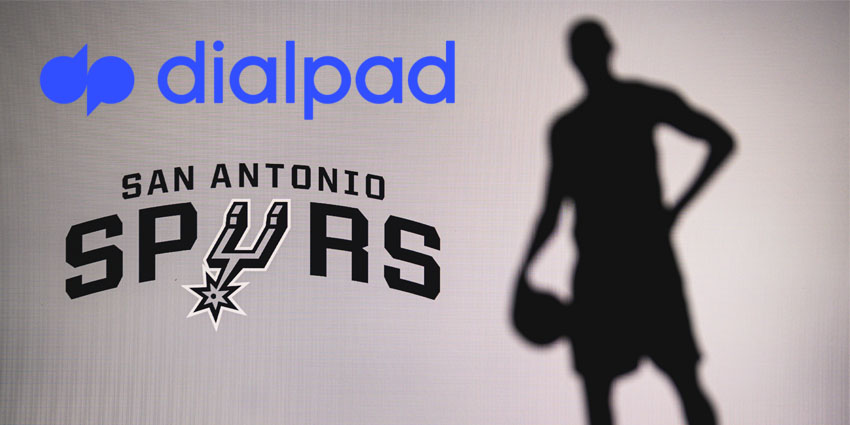Email, SMS, webchat, voice – today’s modern omnichannel communications landscape offers a world of choice for brands and their customers.
All accessible in seconds from our mobile phones, connecting and conversing has never been easier.
However, when it comes to convenience and reach, it’s an app that reigns supreme.
With a staggering two billion global users, WhatsApp is where it’s at.
And that means smart businesses must now put it front and centre of their communications strategy or risk missing a big trick.
Brilliantly, it can be easily integrated to existing CPaaS solutions thanks to WhatsApp Business API – enabling brands to connect with customers at a large scale using conversational APIs via platforms, agents, and bots.
It enables the mass generation of message broadcasts, links to websites via QR codes, and also integrates seamlessly with backend systems, such as Marketing Automation and CRM platforms.
The return on investment is clear – all that is needed is an expert provider partner.
“WhatsApp is the world’s favourite messaging application so it’s crucial for businesses of all kinds and all sizes to ensure they are leveraging its power,” says Rick Carlson, Principal Solutions Engineer at leading global digital provider Syniverse, which has that expertise in abundance.
“By deploying WhatsApp Business API, brands can transform how they connect with their customers. They can deliver rich content securely and establish deep conversational relationships. It all adds up to providing the best possible communications experience.”
Of course, the reason WhatsApp is so important is because we are all so attached to our mobile phones.
Indeed, according to Reviews.org, 71% of people in the US, for example, check their cell phone within the first 10 minutes of waking up.
But, in the case of WhatsApp in particular, it’s not just about written messages.
Photos, images, videos, locations, GIF’s, files – WhatsApp provides the perfect platform for the sharing of all these forms of rich content; creating a more personalized, interactive and memorable communication experience.
WhatsApp can deliver marketing communications which help a brand promote services and products to new and existing customers; informative communications which help customers with service and support; and transactional communications, such as purchasing.
It can also be integrated with organisations’ existing chatbot functionality for more efficient one-to-one interaction.
“Automating WhatsApp conversations can be key to an efficient customer experience at scale,” says Carlson.
“According to Backlinco, there are currently 2 billion active WhatsApp users around the world and the USA accounts for 75.1 million of them.”
Crucially, in June, WhatsApp is to launch four use cases for their business API products – Service, Authentication, Utility and Marketing.
This is different from their current conversation-based pricing model, where only two types of conversations are defined: user-initiated and business-initiated.
The current user-initiated conversations will be renamed as Service conversations, while business-initiated conversations will be further defined as Authentication (One time passcode), Utility (notifications and alerts on agreed-upon transactions), and Marketing (sales, promotions, and anything else).
This means businesses will have monthly visibility of what types of conversations they are engaging in with their customers and will be able to adjust their communication content according to those customers’ response rates.
In addition, an ROI dashboard will track the effectiveness of business messaging spending.
“We are super-excited to welcome this new change, in partnership with Meta,” says Syniverse Senior Product Manager Jenna Massey.
“We believe with WhatsApp’s new use case template category fully-integrated with our existing CPaaS platform, we can empower more businesses to have more relevant and engaging conversations with their end customers.”
To begin leveraging the value of WhatsApp for business, Syniverse suggests a six-point plan of action…
1. Get Started
Set up a relationship and account with a WhatsApp preferred solution provider, such as Syniverse. By working with a preferred and authorized messaging solutions provider, you can rest assured your WhatsApp campaign will abide by regulations and guidelines to avoid interruption and perhaps even the banning of your brand on the WhatsApp platform. The solution provider will also help you get your Meta business management account ID (WABA) and help establish your WhatsApp phone number and display name.
2. Get Registered
WhatsApp is a Meta platform, and your brand will be required to be registered as an official business management account. You can do that here: https://business.facebook.com/overview/.
3. Get Consent
Because your brand will be reaching out to customers through their mobile device, it is important to obtain users’ mobile phone numbers as a means of ‘opt-in’. For example, you can ask customers if they’d like to receive their notifications via WhatsApp. Next, they’ll have to check ‘YES’ and enter their phone number to start receiving notifications on WhatsApp.
4. Get an API or a Bot
Be sure to have either an application API, which will reply automatically to customers through WhatsApp API, or an integrated bot to manage the communications. Customers who reach out to your brand should have a quality customer experience. For example, brands should reply to WhatsApp messages within 24 hours. If you don’t already have a bot to manage automated conversations, Syniverse can handle it for you.
5. Set Up Message Templates
To send out alerts and notifications, WhatsApp requires templates to be registered on their platform. This helps reduce spam and provides more reliability for users.
6. Issue a Strong Call to Action
Spread the word and let your customers know your brand is reachable through WhatsApp. Post your WhatsApp business number on your website, include direction on social media and marketing materials, create a 2D bar code for easy access, and send a SMS message out with a link.
- To learn more about how Syniverse can help your and your customers’ businesses leverage the power of WhatsApp, visit Syniverse.







